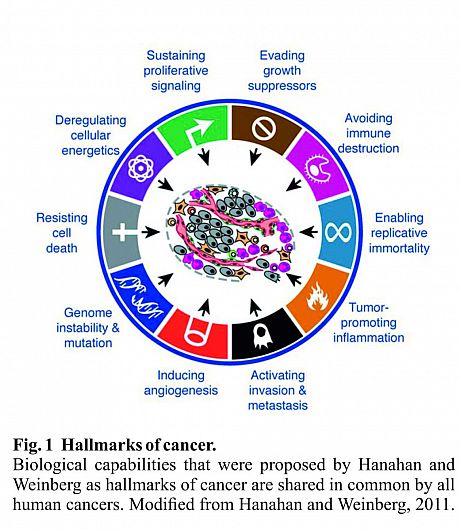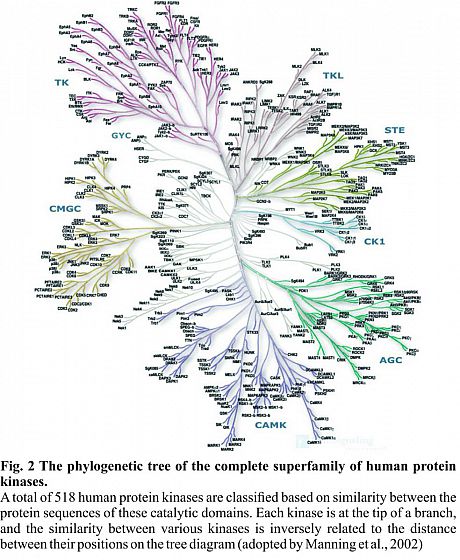Our translational research laboratory combines a variety of molecular, cellular and biochemical techniques along with established in vitro/in vivo models and patients' specimens to study relevant pathways in cancer.
Cancer
Cancer is a heterogeneous disease and the leading cause of death in the world. In 2012, there were approximately 14.1 million new cancer cases and 8.2 million cancer deaths, making up 14.6% of all human deaths worldwide. In addition, about 32.6 million people were living with cancer in 2012 (within 5 years of diagnosis). It is also predicted that the number of annual cancer cases will increase from 14 to 22 million in the next two decades. On the positive view, despite the increase in cancer incidence, cancer mortality has been decreasing. Between 1990-1992 and 2009-2011, the European AS mortality rates decreased by 26% in males and 20% in females. A further 17% decrease of cancer deaths is expected between 2011 and 2030 in the UK. There are more than 200 different types of cancer diagnosed in the UK, among which, breast, lung, prostate and bowel cancers account for over half (53%) of all new cases.
• Hallmarks of cancer
Thanks to the progress in cancer research over the past decades, the understanding of the biological behaviour of cancer has greatly improved.
Hanahan and Weinberg have suggested that the hallmarks of cancer comprise ten biological capabilities acquired during the multistep development of human tumours (Fig. 1). The hallmarks constitute an organising principle for rationalising the complexities of neoplastic disease.
These hallmarks are:
1) Self-sufficiency in growth signals leading to sustaining proliferation; 2) Resistance to cell death signals; 3) Avoidance of anti-growth signals; 4) Uncontrolled replicative immortality; 5) Sustained angiogenesis replicative immortality; 6) Activation of invasion and metastasis; 7) Instability and mutation of genome 8) Deregulation of cellular energy metabolism; 9) Tumour-promoted inflammation; 10) Escaping from immune destruction.
• Protein Kinases
There are approximately more than 500 protein kinase genes throughout the human genome, making up 2% of all human genes. Importantly, up to 30% of all human proteins can be phosphorylated by kinases. Phosphorylation plays an essential role in regulating intracellular signal transduction pathways involving every aspect of cell activity including survival, proliferation, differentiation, apoptosis, metabolism, angiogenesis, immune surveillance and motility.
 Targeted therapies against kinases have improved the clinical outcome of patients in the past decade. However, resistance to these treatments often develops, largely due to the aberrant activation of other kinases possessing a complementary or compensatory function.
Targeted therapies against kinases have improved the clinical outcome of patients in the past decade. However, resistance to these treatments often develops, largely due to the aberrant activation of other kinases possessing a complementary or compensatory function.
For example, clinical resistance to Tyrosine Kinase inhibitors may arise by other kinases phosphorylating the same site(s) as the targeted kinase, and it is not necessarily the case that homologous or closely related kinases are able to do this.
Therefore, an understanding of the phosphorylation signature of all kinases is needed to allow prediction of inhibitor combinations that could target the primary kinase and those that could redundantly achieve equivalent phosphorylation.
Only a small number of kinases described thus far have been thoroughly studied and even in these cases a global functional analysis and understanding of their proteomic and phospho-proteomic portrait is lacking; a complete proteomic portrait is likely to yield new translational insights.
Our work is supported by:



